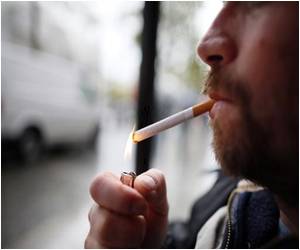Smoking cessation medication varenicline in combination with nicotine replacement therapy was more effective than varenicline alone at achieving tobacco abstinence at 6 months, says a study.

Coenraad F. N. Koegelenberg, M.D., Ph.D., of Stellenbosch University, Cape Town, South Africa, and colleagues randomly assigned 446 generally healthy smokers to nicotine or placebo patch treatment 2 weeks before a target quit date (TQD) and continued for an additional 12 weeks. Varenicline was begun 1 week prior to TQD, continued for a further 12 weeks, and tapered off during week 13. The study was conducted in 7 centers in South Africa from April 2011 to October 2012; 435 participants were included in the efficacy and safety analyses.
The researchers found that participants who received active NRT and varenicline were more likely to achieve continuous abstinence from smoking (confirmed by exhaled carbon monoxide measurements) at 12 weeks (55.4 percent vs 40.9 percent) and 24 weeks (49.0 percent vs 32.6 percent) and point prevalence abstinence (a measure of abstinence based on behavior at a particular point in time) at six months (65.1 percent vs 46.7 percent) than those receiving placebo NRT and varenicline.
In the combination treatment group, there was more nausea, sleep disturbance, skin reactions, constipation, and depression reported, with only skin reactions reaching statistical significance (14.4 percent vs 7.8 percent); the varenicline-alone group experienced more abnormal dreams and headaches.
"In this study, to our knowledge the largest study to date examining the efficacy and safety of supplementing varenicline treatment with NRT, we have found the combination treatment to be associated with a statistically significant and clinically important higher continuous abstinence rate at 12 and 24 weeks, as well as a higher point prevalence abstinence rate at 6 months," the authors write.
They add that further studies are needed to assess long-term efficacy and safety.(doi:10.1001/jama.2014.7195; Available pre-embargo to the media at media.jamanetwork.com)
Advertisement
Source-Eurekalert















